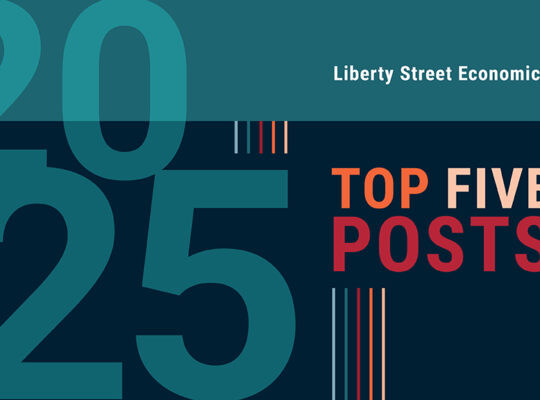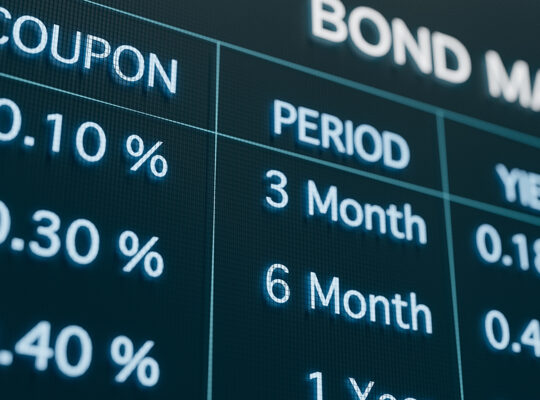
Household saving soared in the United States and other high-income economies during the pandemic, as consumers cut back on spending while government policies supported incomes. More recently, saving behavior has diverged, with the U.S. saving rate dropping below its pre-pandemic average while saving rates elsewhere have remained above their pre-pandemic averages. As a result, U.S. consumers have been spending down the “excess savings” built up during the pandemic while the excess savings abroad remain untapped. This divergent behavior helps explain why U.S. GDP has returned to its pre-pandemic trend path even as GDP levels in other high-income economies continue to run well below trend.
Free-Spending U.S. and Thrifty Foreign Consumers
Household saving, measured as the difference between disposable income and consumer spending, soared in the United States and other high-income economies during the COVID-19 pandemic. In the U.S. and Canada, stepped-up social benefit payments and other income support measures pushed incomes well above pre-pandemic trajectories, while similar measures in the euro area, United Kingdom, and Japan kept incomes near their trend paths. Meanwhile, consumption plummeted in all these economies. (Our post from two and a half years ago discusses the early stages of these developments in detail.)
The chart below shows the resulting rise in household saving as a share of disposable income. The blue bars show saving rates prior to the pandemic, measured as the 2015-19 average. The orange bars show the average saving rate for 2020-21, and the gray bars show saving rates since the start of 2022. While the pandemic was hardly over by the start of 2022, recoveries from the COVID downturn were well underway, and governments had begun to scale back income support policies.
Household Saving Rates Above Pre-Pandemic Levels Outside the U.S.
Household Saving as a Percent of Disposable Income
Note: Data are through the second quarter of 2023 for the U.S., euro area, UK, and Canada, and through the first quarter of 2023 for Japan.
As can be seen in the chart, saving rates spiked in 2020-21 in the major high-income economies, ranging from a 6.5 percentage point increase in the euro area to a 10 percentage point jump in Canada relative to pre-pandemic averages. What’s more interesting for our present purposes is the divergence in saving behavior since 2022. While saving rates have fallen across the board relative to 2020-21, only in the United States has the rate dropped below its pre-pandemic average.
This divergence is quite stark. The average U.S. saving rate since 2022 is down some 2.5 percentage points from the 2015-19 average. Saving rates elsewhere range from slightly above pre-pandemic norms (0.5 percentage point higher in the euro area) to markedly above (3.5 percentage points higher in Canada). The same relative comparison holds in the latest quarterly data, with saving rates down from the 2015-19 average in the U.S. but up from the earlier period elsewhere.
Measuring Excess Saving
We calculate a simple “excess savings” measure to compare the increase in household resources from changes in saving behavior since the onset of the pandemic. Starting from the first quarter of 2020, the amount of excess saving is simply the difference between actual saving and what saving would have been at the 2015-19 pre-pandemic saving rates out of actual disposable income. We then sum these totals through the current period. Finally, we divide these summed amounts of excess savings by disposable income to allow comparisons across countries.
There is substantial uncertainty around this approach, as it assumes that the saving rate without the pandemic would have remained equal to the five-year pre-pandemic average. Other counterfactuals are possible. For example, the saving rate jumped to 7.6 percent in 2019, a bit more than a percentage point above the 2015-19 average. Using the 2019 rate as the benchmark would have reduced our estimate of excess savings.
The chart below shows the evolution of excess savings in the United States and other major high-income economies. The non-U.S. economies are shown as a group; figures for individual economies are weighted by their GDP, with the euro area accounting for about 60 percent of this aggregate, Japan about 20 percent, the UK about 12 percent, and Canada about 8 percent.
U.S. Consumers Are Spending Down Excess Savings
Excess Savings as a Percent of Annualized Disposable Income
Notes: The foreign high-income series is a GDP-weighted average of the euro area, Japan, the United Kingdom, and Canada. Excess savings in Japan as a percentage of disposable income (PDI) for the second quarter of 2023 is carried over unchanged from the first quarter, since second-quarter data have not yet been released. Japan represents about 20 percent of the foreign aggregate.
Excess savings followed similar upward trajectories in the U.S. and abroad from the beginning of the pandemic through the end of 2021, reaching about 14 percent of annual disposable income ($2.6 trillion in the United States). Since then, U.S. excess savings has steadily declined, falling to 10 percent of disposable income ($1.9 trillion) by the second quarter of 2023. In sharp contrast, excess savings abroad has held flat relative to disposable income.
For the United States, this pattern matches what we saw in the first chart above: Saving rates tracked well above pre-pandemic norms in 2020-21 but have tracked below since then. Why don’t we see a further rise in the line for foreign excess savings since 2022, given that saving rates have remained above pre-pandemic values? The answer is that excess savings has continued to rise in nominal terms for all four economies, but the increase has been matched by growth in nominal disposable income.
Quantifying the Growth Implications
The chart below helps quantify the contribution to GDP growth from the drawdown in U.S. excess savings. The red line shows real consumer spending, indexed to equal 100 in 2019. The blue line shows real disposable income, also indexed to 100 in 2019. Note that making consumer spending and income equal in the index year means the gap between the two reflects changes in the saving rate since 2019. The black line shows their average trend over the five years prior to the pandemic.
U.S. Consumption Back to Trend but Income Lags
United States: Real Income and Consumption Indexes
Note: The average trend for consumption and income is based on growth from the fourth quarter of 2014 to the fourth quarter of 2019.
As shown in the chart, real consumption plummeted during the early stages of the pandemic but returned to trend by about the middle of 2021. Subsequent growth has hewed close to the pre-pandemic trend. Real disposable income, in contrast, spiked during the early stages of the pandemic, pushed higher by income support policies. But real income has fallen well below trend, by about 3 percentage points as of the second quarter of 2023. Data for the first two months of the third quarter, not shown here, have the gap widening, with a small drop in real income and a trend increase in consumption.
The gap between real consumption and real disposable income has been financed by drawing down excess savings. If the U.S. saving rates had remained at the pre-pandemic average value (implying zero excess saving), the two indexes would have tracked in tandem. Real consumption would then be some 3 percent lower than at present for the given level of income. By itself, this would leave real GDP about 2 percent lower.
Of course, this type of all-else-equal exercise requires caveats. It could understate the boost to the economy, to the extent this extra consumer spending had a multiplier impact by raising growth and employment above what they would have been. Conversely, it could overstate the boost, to the extent the extra spending was allocated to imports.
We next show a similar chart for our foreign aggregate. Real consumption also plummeted in these economies during the early stages of pandemic, in fact even more so than in the United States. While consumption has since recovered, it remains well below the pre-pandemic trend—in fact, no higher than in 2019. Real disposable income, meanwhile, did not have a surge during the pandemic and has been largely flat since 2019, creating a large shortfall relative to its pre-pandemic trend. The key point is that the consumption line has stayed below the income line. The convergence of these two series in recent quarters corresponds to the plateauing of foreign excess saving evident in the second chart of this post. Foreign consumers could have drawn on accumulated excess savings to support consumption growth but have chosen not to.
Foreign Income and Consumption Tracking Below Trend
Foreign Economies: Real Income and Consumption Indexes
Notes: The foreign high-income series is a GDP-weighted average of the euro area, Japan, the United Kingdom, and Canada. Disposable income data for the second quarter of 2023 in Japan have not yet been released. Income for that quarter is extrapolated from the first quarter of 2023 at the average growth since the first quarter of 2022. Japan represents about 15 percent of the foreign index.
The drawdown in U.S. excess savings largely accounts for the U.S. growth advantage since the pandemic. As of the second quarter of 2023, U.S. GDP was 6 percent above its fourth-quarter 2019 level, with consumer spending up 9 percent. That is, consumer spending was a boost to GDP by doing better than the rest of the economy. The corresponding numbers are 3 percent and 0 percent for the euro area, 3 percent and 0 percent for Japan, 2 percent and -1 percent for the U.K., and 3 percent and 4 percent for Canada. In all but Canada, consumer spending underperformed relative to the rest of the economy.
A Mystery
We have no clear explanation for the divergence in U.S. and foreign saving behavior. As a general matter, household saving rates tend to increase when economic conditions and prospects are regarded as poor and decline when they are regarded as good. But according to measures constructed by the OECD, U.S. consumer confidence has been weaker relative to long-term norms than confidence in the other high-income economies, which would be consistent with higher saving in the U.S. and lower saving abroad.
Differences in the drivers of excess saving could be part of the explanation. U.S. saving during the pandemic came about equally from higher income and lower spending, while excess saving abroad came largely from lower spending. One possibility is that consumers are more willing to spend down excess savings when it comes from unexpected income windfalls, such as, in the U.S. case, large government transfers. The idea, based on prospect theory, is that government transfers are “unearned” and thus less valuable and easier to spend. This notion conflicts with the permanent income hypothesis, which holds that consumers tend to keep spending fairly steady after a temporary boost to income.
The runoff of excess saving in the U.S. has supported growth in the face of lagging real income and tighter financial conditions. Growth in foreign high-income economies received no similar support, with weak consumer spending acting as a fundamental drag on their recoveries.

Thomas Klitgaard is an economic research advisor in International Studies in the Federal Reserve Bank of New York’s Research and Statistics Group.

Matthew Higgins is an economic research advisor in International Studies in the Federal Reserve Bank of New York’s Research and Statistics Group.
How to cite this post:
Thomas Klitgaard and Matthew Higgins, “Spending Down Pandemic Savings Is an “Only-in-the-U.S.” Phenomenon,” Federal Reserve Bank of New York Liberty Street Economics, October 11, 2023, https://libertystreeteconomics.newyorkfed.org/2023/10/spending-down-pandemic-savings-is-an-only-in-the-u-s-phenomenon/.
Disclaimer
The views expressed in this post are those of the author(s) and do not necessarily reflect the position of the Federal Reserve Bank of New York or the Federal Reserve System. Any errors or omissions are the responsibility of the author(s).
Source link








